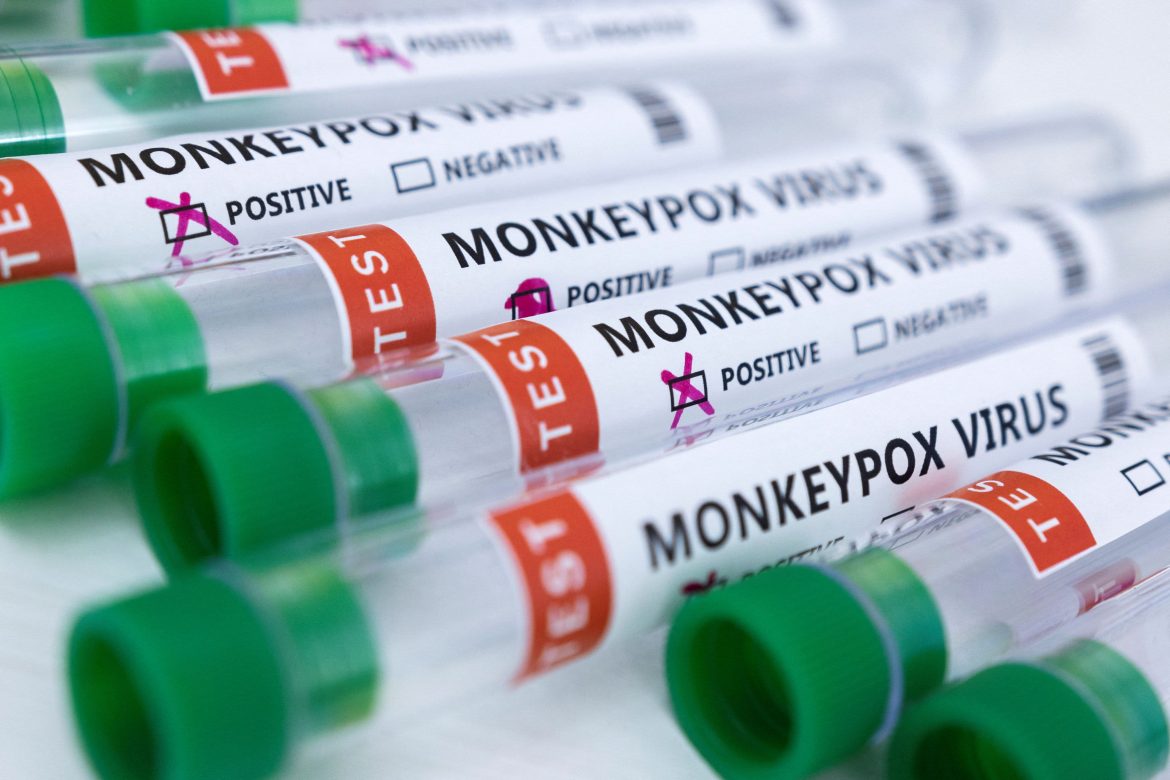Dr Poonam Khetrapal, Regional Director of the Globe Health Organization’s South-East Asia Region, stated on Monday that the world is experiencing the unexpected resurgence of Monkeypox.
When asked why Monkeypox is getting so much attention right now, Poonam Khetrapal remarked, “Cases of Monkeypox are being reported from numerous nations.” Many of them had never seen Monkeypox before. The surprising worldwide and regional spread of this illness suggests that it may have been circulating below the detection of monitoring systems. It is plausible that persistent human-to-human transmission, whether direct or indirect, went undiscovered for some time.”
“The risk of monkeypox globally and the WHO South-East Asia Region has assessed it as moderate considering this is the first time that Monkeypox cases and clusters are reported concurrently in many countries in widely disparate WHO geographical areas, balanced against the fact that mortality has remained low in the current outbreak.”
“Genomic studies have revealed that the monkeypox virus seems to have changed over recent years. More studies are needed to understand the virus’s evolution. WHO is regularly reviewing available data with its laboratory and other expert groups,” she added.
Speaking on what measures India should take for the prevention and control of Monkeypox, she said, “In the current Monkeypox outbreak, transmission apparently occurred primarily through close physical contact, including sexual contact. Transmission can also occur from contaminated materials such as linens, bedding, electronics, and clothing, that have infectious skin particles. There are still many unknowns about the virus.”
“Since the start of the outbreak, WHO has been supporting countries to assess risk, and initiating public health measures, while also building and facilitating testing capacities in the region. Engaging and protecting the affected communities; intensifying surveillance and public health measures; strengthening clinical management and infection prevention and control in hospitals and clinics; and accelerating research into the use of vaccines, therapeutics and other tools, are among the key response measures. We need to stay alert and be prepared to roll out an intense response to curtail the spread of Monkeypox. And while doing this, our efforts and measures should be sensitive, and devoid of stigma and discrimination,” she added.
When asked about the risk of transmission in South East Asian countries, Dr Khetrapal said, “The region has been on alert for Monkeypox since the reporting of an increase in cases globally. Countries have been taking measures to rapidly detect and take appropriate measures to prevent the spread of monkeypox. WHO has been supporting the member countries in the Region to assess the risk for monkeypox and strengthening their capacities to prepare and respond to the evolving multi-country outbreak. We have been sharing guidance for raising awareness; surveillance, case investigation and contact tracing; laboratory diagnostics and testing; clinical management and infection prevention and control and community engagement.”
When asked about the risk of transmission in South East Asian countries, Dr Khetrapal said, “The region has been on alert for Monkeypox since the reporting of an increase in cases globally. Countries have been taking measures to rapidly detect and take appropriate measures to prevent the spread of monkeypox. WHO has been supporting the member countries in the Region to assess the risk for monkeypox and strengthening their capacities to prepare and respond to the evolving multi-country outbreak. We have been sharing guidance for raising awareness; surveillance, case investigation and contact tracing; laboratory diagnostics and testing; clinical management and infection prevention and control and community engagement.”
Speaking on the preparedness to deal with Monkeypox, Dr Poonam Khetrapal said, ” The region has been on alert for Monkeypox since the reporting of an increase in cases globally. Countries have been taking measures to rapidly detect and take appropriate measures to prevent the spread of monkeypox. WHO has been supporting the member countries in the Region to assess the risk for monkeypox and strengthening their capacities to prepare and respond to the evolving multi-country outbreak. We have been sharing guidance for raising awareness; surveillance, case investigation and contact tracing; laboratory diagnostics and testing; clinical management and infection prevention and control and community engagement.”
“In view of the limited testing capacities in the region for monkeypox, WHO has coordinated with four laboratories to serve as referrals – National Institute of Virology, India; Victorian Infectious Diseases Reference Laboratory, Australia; National Institute of Health, Department of Medical Sciences, Thailand; and Faculty of Medicine, Chulalongkorn University, Thailand. WHO is also supporting countries in the region build testing capacities with technical assistance as well as procurement of required provisions that are high in demand and low in supplies globally. Orienting clinicians in both public and private sectors to identify, isolate, report and treat cases of monkeypox, are among the key priority measures,” she added.
“Monkeypox requires collective attention and coordinated action to stop its further spread. In addition to using public health measures and ensuring health tools are available to at-risk populations and shared fairly, it is important to work with communities to ensure that people who are most at risk, have the information and support they need to protect themselves”
According to the Regional Director of WHO South-East Asia Region, newborns, children and people with underlying immune deficiencies may be at risk of more serious symptoms and death from monkeypox.
“Health workers are also at higher risk due to longer virus exposure. There are no sufficient data regarding monkeypox infection during pregnancy, although limited data suggest that it may lead to adverse outcomes for the foetus,” she added.





